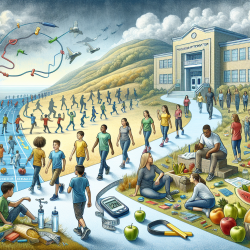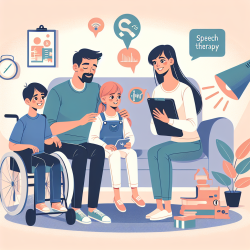Introduction
Physical activity is crucial for the development and well-being of children and adolescents. The study titled “läuft.” - a school-based multi-component program to establish a physically active lifestyle in adolescence: study protocol for a cluster-randomized controlled trial, sheds light on an innovative approach to promote physical activity among adolescents. This blog explores the insights from the study and provides practical steps for practitioners to enhance their skills in fostering a physically active lifestyle among young people.
The Importance of Physical Activity
Research consistently shows that physical activity during childhood and adolescence is linked to numerous health benefits, including the prevention of chronic diseases such as obesity, hypertension, and depression. Despite these benefits, a significant portion of adolescents do not meet the recommended levels of physical activity. The “läuft.” program addresses this gap by targeting adolescents through a school-based intervention.
Key Components of the “läuft.” Program
The “läuft.” program is designed to enhance physical activity among adolescents through a multi-level approach. The program includes:
- Individual Level: Students use pedometers to track their daily steps, encouraging self-monitoring and goal setting.
- Class Level: Class competitions promote teamwork and creativity in increasing physical activity.
- School Level: Schools receive materials and seminars to support the integration of physical activity into the curriculum.
- Parental Involvement: Parents are engaged through informational materials and conferences to support their children's active lifestyle.
Implementing Research Outcomes
Practitioners can draw from the “läuft.” program to implement effective strategies in their settings:
- Utilize Technology: Incorporate pedometers or fitness trackers to encourage self-monitoring among adolescents.
- Foster a Supportive Environment: Engage teachers, parents, and peers to create a supportive network that encourages physical activity.
- Incorporate Creativity: Design competitions and challenges that motivate students to be active in innovative ways.
- Focus on Long-Term Change: Develop strategies that promote sustainable physical activity habits beyond the school setting.
Encouraging Further Research
The “läuft.” study highlights the potential of school-based interventions to promote physical activity among adolescents. However, further research is needed to explore long-term impacts and refine strategies for diverse populations. Practitioners are encouraged to stay informed about the latest research and consider conducting their own studies to contribute to this important field.
Conclusion
The “läuft.” program offers valuable insights into promoting physical activity among adolescents. By implementing its strategies, practitioners can play a pivotal role in fostering a healthier, more active generation. To read the original research paper, please follow this link: “läuft.” - a school-based multi-component program to establish a physically active lifestyle in adolescence: study protocol for a cluster-randomized controlled trial.










